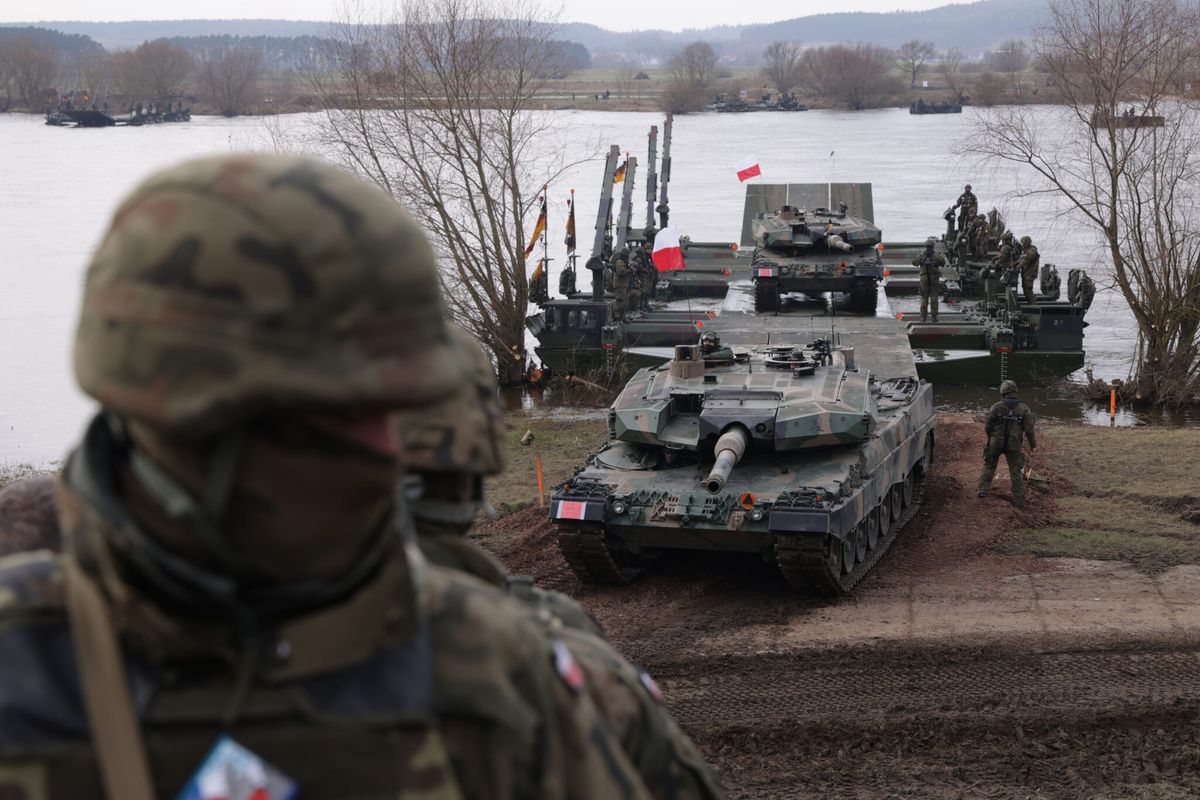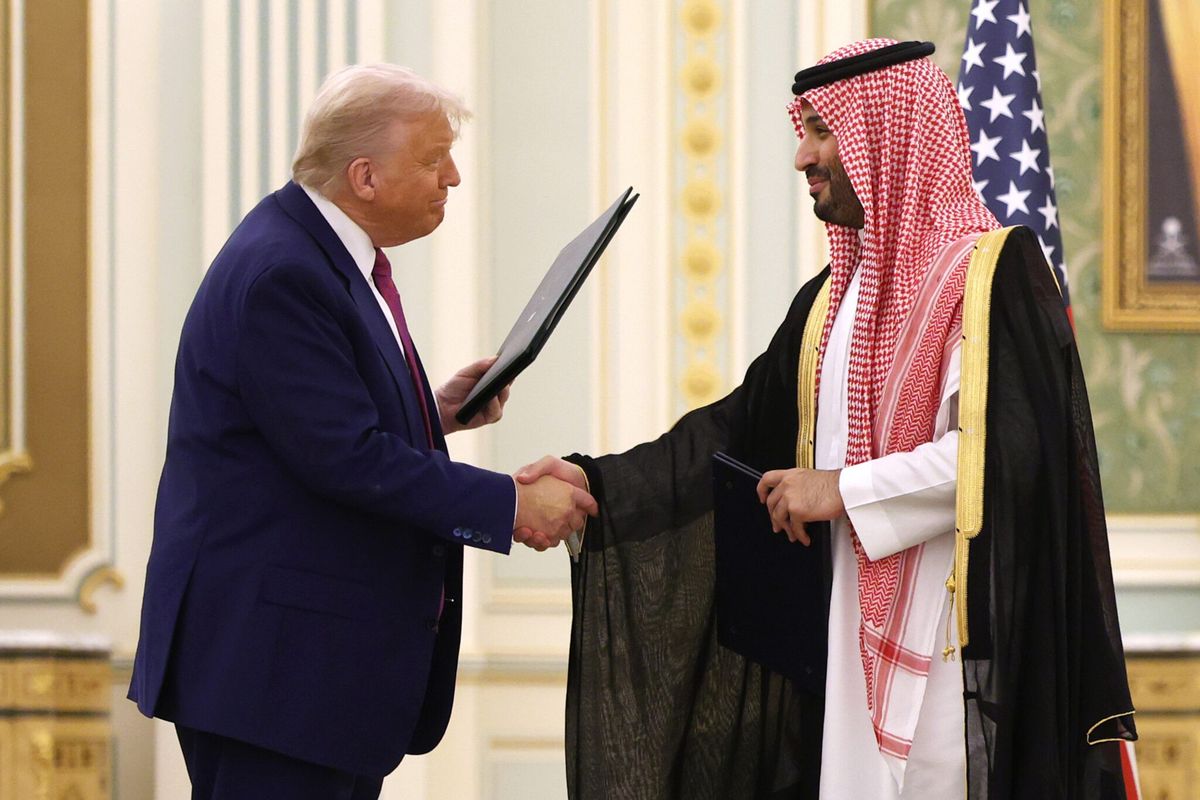OPINION — “The President recently issued updated nuclear weapons employment guidance [emphasis added], which takes into account the realities of a new nuclear era. It emphasizes the need to account for the growth and diversity of the PRC’s [People’s Republic of China] nuclear arsenal — and the need to deter Russia, the PRC, and North Korea simultaneously.”
That was Pranay Vaddi, President Biden’s Senior Director for Arms Control, Disarmament, and Nonproliferation at the National Security Council, speaking on June 7, to the Arms Control Association’s annual meeting.
Vaddi said, “We’re focused on a ‘better’ approach, not necessarily a ‘more’ approach — which will require some creative solutions, and potentially discrete capabilities that fill an important niche.”
As an example, he pointed to development underway for the B61-13 gravity bomb which, he said, will “provide an additional capability against certain harder and large-area military targets and that will allow us to move beyond the outdated megaton-class B83-1 that we seek to retire.”
Missing: What the weapons actually do
When describing nuclear weapons publicly, officials often speak in general terms and numbers of such weapons, without mentioning what a single one of them could do.
Vaddi did not disclose or discuss the size of the “large area” subject to the explosive power of the B61-13 or the destruction it would cause were it ever used in wartime. I believe the destructive power of a single nuclear weapon should be part of any discussion or congressional debate about new or even existing nuclear weapons.
For example, it is estimated the new B61-13 – the “gravity bomb” – will have varied yields, the highest being 360 kilotons, or the destructive equivalent of 360,000 tons of TNT.
That means one B61-13 bomb, if detonated on a target, would deliver a level of destruction more than 20 times greater than the atomic bomb that destroyed Hiroshima, or equal to the damage caused if the Israeli Air Force had used 360,000 2,000-pound conventional bombs in Gaza.
While we are discussing yields, it is worth noting that the B83-1 – the weapon Vaddi said would be retired – has a yield of 1.2 megatons, or the equivalent of exploding 1.2 million tons of TNT. The U.S. originally built over 600 B83s. More than 300 B83s are said to be in storage, some of them at U.S. Air Force bases where B-52 strategic bombers, capable of carrying them, are located.
Why did the U.S. build that number of B83s in the first place? And why keep them around now?
Beyond the B61-13, Vaddi did not mention other nuclear weapons in the “better” category, but there are some in the works.
There is the W93, the first new strategic warhead in 40 years for submarine-launched ballistic missiles; the first W93 is expected to be built by the mid-2030s. Also, the National Nuclear Security Administration (NNSA) has started exploring a warhead for a sub-launched cruise missile, as demanded by Congress last year. In addition, NNSA has begun two Phase 1 feasibility studies for another nuclear weapon to defeat deeply-buried targets, and one for a non-ballistic reentry vehicle.
In the “more” category, Vaddi did say that “absent a change in the trajectory of adversary arsenals, we may reach a point in the coming years where an increase from current deployed numbers is required – and we need to be fully prepared to execute if the President makes that decision – if he makes that decision.”
It’s not just for the President anymore. Cipher Brief Subscriber+Members have access to their own Open Source Daily Brief, keeping you up to date on global events impacting national security. It pays to be a Subscriber+Member.
Nuclear weapons – and “employment guidance”
Here is why I focused on Vaddi’s mention of Biden’s updated “nuclear weapons employment guidance”: because under the law, Title 10 U.S. Code Section 491(a), 60 days before the date on which the President implements a new nuclear employment strategy different from the one then in force, he must report to Congress on “the modifications to the nuclear weapons employment strategy, plans, and options of the United States made by the [new] strategy.”
During the Trump administration, such a report – a ten-page, so-called 491 report – was made public on Nov. 30, 2020. It said, “The President’s April 2019 nuclear weapons employment guidance, as implemented by the Secretary of Defense’s Nuclear Weapons Employment Planning and Posture Guidance, guides the planning for employment of nuclear weapons consistent with national policy.”
That 2020 Trump administration 491 report described creating W76-2 low-yield, sub-launched ballistic missile warheads meant to counter a foreign adversary’s [Russia’s] perception of a gap in U.S. capabilities that could be exploited in a regional wartime scenario. The 2020 report also called for a nuclear sea-launched cruise missile (SLCM-N), to provide a highly mobile and assured response option for added deterrence value.
The W76-2 low-yield warheads were built – reportedly just 25 of them – and today they are carried atop D5 sub-launched ballistic missiles on Ohio-class strategic submarines currently on active patrols. The W76-2s have an estimated five kiloton to eight kiloton yield, or about half the destructive power of the Hiroshima bomb – in this case low-yield in a single nuclear warhead equals the explosive power of 5,000 or more 2,000-pound conventional bombs.
Since the Trump administration eventually published a declassified version of its 2020 491 report, I hope the Biden administration will eventually make public a 491 report on the Biden “updated nuclear weapons employment guidance” that Vaddi referred to.
Vaddi did say Biden’s new guidance also reaffirms our commitment to use arms control and other tools to minimize the number of nuclear weapons needed to achieve U.S. objectives. And it reiterates that the United States will continue to abide by New START limits for the duration of the Treaty, “so long as Russia does the same.”
Vaddi added that the U.S. is also seeking to extend the life of certain Ohio-class ballistic missile submarines to provide additional margin during the transition from legacy strategic delivery submarines, bombers and ICBMs to modern capabilities across the Triad.
As to numbers, Vaddi made clear, “We [the U.S.] do not need to increase our nuclear forces to match or outnumber the combined total of our competitors to successfully deter them.” However, he later said what China, Russia and North Korea are doing with nuclear weapons is “forcing the United States and our close allies and partners to prepare for a world where nuclear competition occurs without numerical constraints.”
Vaddi then claimed that the U.S. development of more and better nuclear weapons “is incredibly important to rejuvenating strategic arms control” because “it will incentivize Russia and the PRC to engage in arms control.” And if arms control efforts don’t take place, Vaddi said, the U.S. will be prepared “for an environment in which they [Russia and the PRC] may continue to refuse engagement.”
The Trump factor
There are other pressures on the Biden administration to increase the U.S. nuclear weapons force.
The Heritage Foundation-sponsored collection of essays on what a second Trump administration might look like should he win, Mandate for Leadership 2025: The Conservative Promise, calls for the U.S. to “expand and modernize the U.S. nuclear force so that it has the size, sophistication, and tailoring to deter Russia and China simultaneously.” It also wants to “develop a nuclear arsenal with the size, sophistication, and tailoring – including new capabilities at the theater level – to ensure that there is no circumstance in which America is exposed to serious nuclear coercion.”
In addition, the House Appropriations Committee, in its report on the fiscal 2025 Defense Appropriations bill last week, sought a report on recommendations made by the 2023 Congressional Commission on the Strategic Posture of the United States based on the combined Russia, PRC and North Korean nuclear threat.
That Commission recommended increasing the number of new strategic nuclear delivery systems: More Columbia-class submarines and their sub-launched ballistic missile systems and warheads; more B-21 strategic bombers and nuclear long-range, stand-off cruise missiles; and more Sentinel ICBMs and their new warheads.
I mention that 2023 Commission’s recommendations because one of them was extending the service life of up to five Ohio-class submarines which, as mentioned above, Vaddi said the Biden administration was seeking to carry out.
Last month, Sen. Ed Markey (D-Mass.), Rep. John Garamendi (D-Calif.) and several other House and Senate members sent a letter to Biden asking him “to guard against the further degradation of the nuclear arms control regime, prevent an unconstrained, costly global nuclear arms race that has no winners, and avoid the use of nuclear weapons in Ukraine or anywhere else.”
In the coming weeks, when the fiscal 2025 Defense Appropriations Bill comes up for approval on the floors of both the House and Senate, there is an opportunity for lengthy, public debates over where the U.S. is going in nuclear weapons.
I hope that Markey, Garamendi and others can lead that debate, which is very much needed to end this march to more nuclear weapons when there are already more than enough to destroy the world.
The Cipher Brief is committed to publishing a range of perspectives on national security issues submitted by deeply experienced national security professionals.
Opinions expressed are those of the author and do not represent the views or opinions of The Cipher Brief.
Have a perspective to share based on your experience in the national security field? Send it to Editor@thecipherbrief.com for publication consideration.
Read more expert-driven national security insights, perspective and analysis in The Cipher Brief












